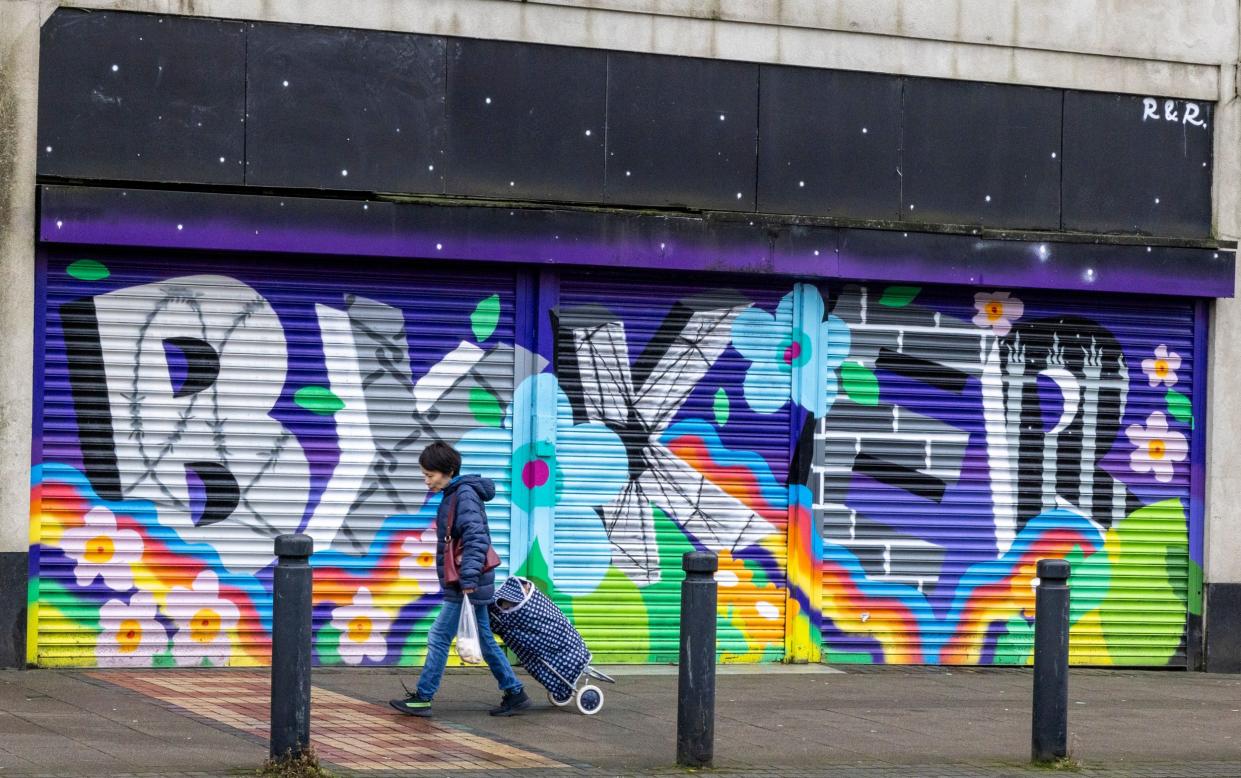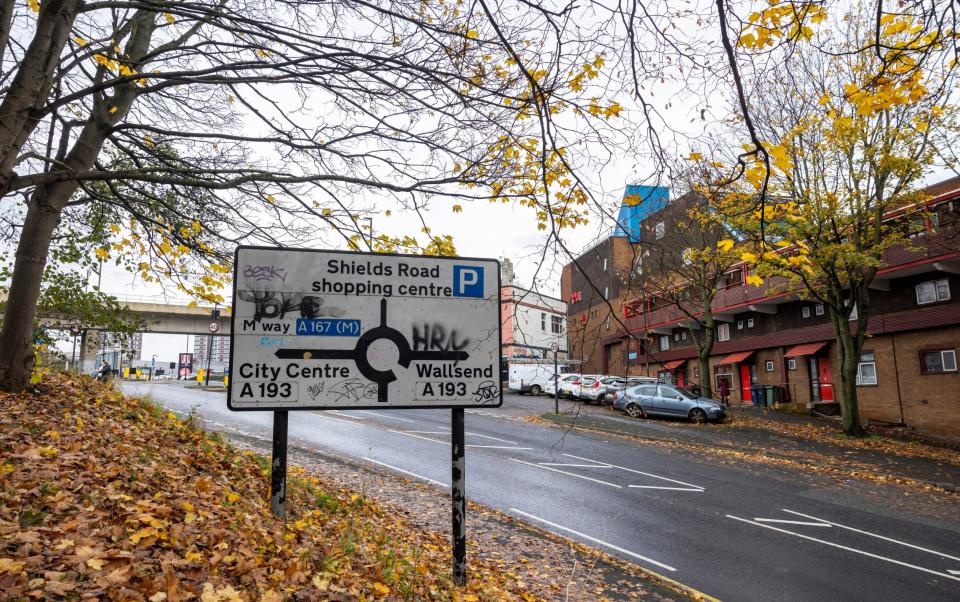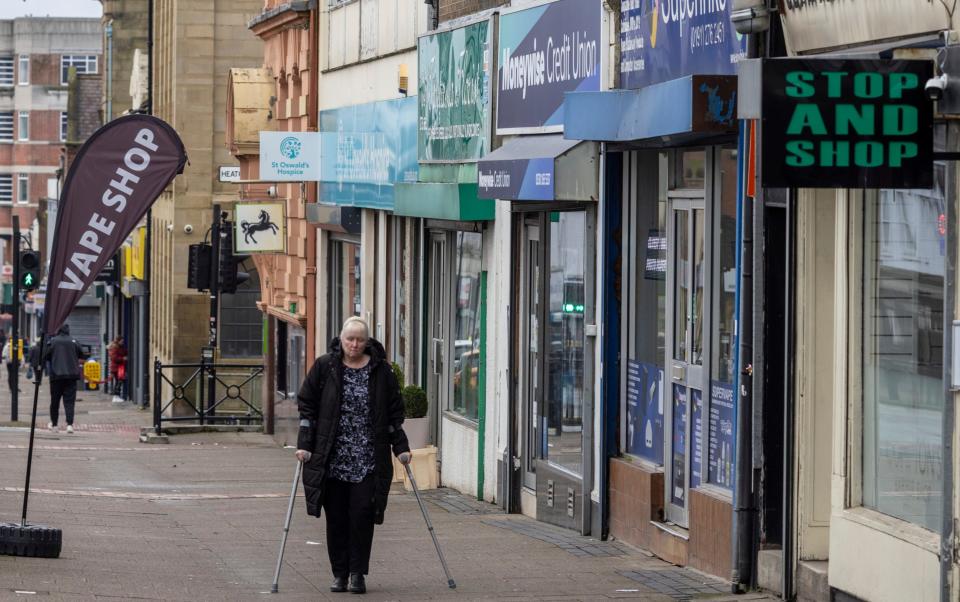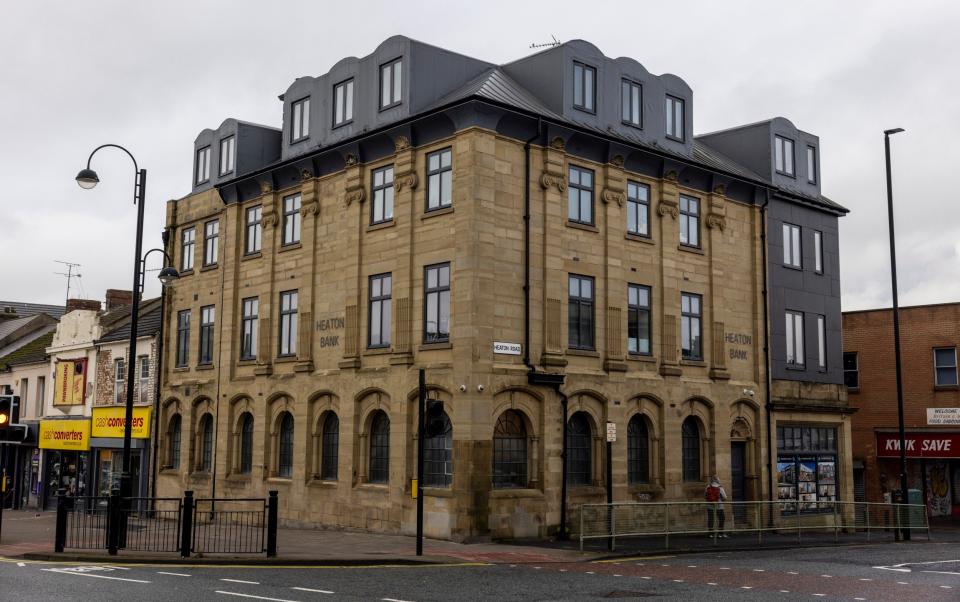A Telegraph tour of the English high street: Shields Road, Byker – the worst in the country

- Oops!Something went wrong.Please try again later.
The traditional British high street was, for so many, the beating heart of their town. But as huge chains consumed spaces once filled by local independent businesses – and struggling firms began to disappear entirely – was the soul of our towns lost? Christopher Howse is travelling the nation to speak to local people about their high street. How it has changed, what they miss… and why there are still joys to be found. This week, Christopher explores Shields Road in Byker, Newcastle upon Tyne.
Shields Road in Byker has been ranked the worst high street in England repeatedly over the past six years. It is scarred by boarded-up shops, graffiti, theft, drunks congregating, aggressive begging and people using drugs publicly. In one month last year 111 crimes were reported in the street. So I visited with trepidation.
It must be said first of all that this is not the Byker Grove seen in the teen drama that ran from 1989 to 2006. That was filmed in the west end of Newcastle. This is in the east end.
The Metro, a couple of stops from Newcastle city centre, enters Byker not underground but sailing across a 100ft high viaduct over the Ouseburn valley. Outside the station looms the most famous feature of the real Byker – the Byker Wall. It is a long curving range of 620 maisonettes, half a mile long, with small windows facing outwards towards the A193 (the bypass relieving Shields Road), which roars past in a concrete trench.
Behind the Byker Wall, a low-rise estate, entered via pedestrian underpasses and open gateways, houses 9,500 people. It was built in the 1970s to the design of Ralph Erskine, who was much influenced by social developments in Sweden. The estate was listed Grade II* in 2007. It looks all right; living there is another question.
The estate replaced demolished streets of terrace houses. Some were built on the Tyneside-flat system of a ground floor and a first-floor flat, each with a ground-floor front door.

The old houses were not “back to back” but had small backyards. Many houses had been condemned as unfit for human habitation, mostly because of inadequate sewerage.
Erskine stressed the need to rehouse the residents “without breaking family ties and other valued associations or patterns of life”. But fewer than 20 per cent of the original residents were rehoused in the new estate.

I found the Byker estate quiet and even leafy on an early winter’s morning of watery sunshine. The Catholic church of St Lawrence, a lone 19th-century survival in the embrace of the Wall, was closed and advertised only two Masses a week. The priest has two other churches to look after. A man in tracksuit bottoms was walking a dog of the XL bully kind. I didn’t say: “Oh, hello. Do you sell drugs?”
Outside the Metro station empty modern buildings surrounded a 19th-century clock on a tall iron pillar. It didn’t go. A windswept paved area between the swimming pool and Shields Road, nicknamed “Suicide Square” (officially Hadrian Square), was deserted. This is where drug addicts often hang around. But it had been raining, night and day, and the benches between thin trees were deserted.
Shields Road, once the turnpike road to North Shields, at first looked no worse than many a high street. Greggs was doing a good trade next door to Iceland. Most of the shops were two-storeys and built of brick.
An old stone bank, faced with Classical pilasters, built for Lloyds in 1906, had been named Heaton Bank and converted into flats (for young professionals, a letting agent declared hopefully, not just student accommodation).

Part of the melancholy of Shields Road is the knowledge of what it used to be. At Little’s newsagents, which has been trading for a century, Sue, who has worked there for 23 years, sold me a bar of chocolate and remembered: “It used to be a fantastic street. People came from all over to shop. There were two department stores – Parrish’s and Beavan’s. Over the years the best shops have closed.
“We’ve got the drunks, the druggies and the beggars – people feel intimidated. The shops now are charity shops, bookmakers, beauty shops. There’s nothing here to attract people.
“We have some lovely customers,” she insisted, “but it used to be a community. It’s not anymore.”
The Art Deco bulk of Parrish’s was still standing. The steel shutters at ground level were shut, and talented graffiti artists had been sponsored to spray on pictures of fashionable faces or Goth imagery rather than the usual scribble of taggers.
As I walked westwards, three girls in their twenties, dressed up as for a party, their faces a tanning-studio orange, approached noisily. One crouched down then sprang up. Another carried a two-litre lemonade bottle, the third a bottle of spirits. They were drunk. It was 11.45am.
Some shops offered to cash cheques or buy gold, or displayed the pawnbrokers’ balls. Solicitors advertised emergency phone numbers. There were slot-machine arcades. Morrisons supermarket, the western limit of the main street, stood on the site of the Apollo cinema where couples from Byker and Heaton would come for a night out. It opened in 1933, closed in 1983 and was demolished in 2001. A British Heart Foundation shop occupies the ground floor of the fine old building of Beavan’s department store, clad in faience tiling.
Opposite, I skirted round a man on the pavement. He was holding an opened can of beer. His gait was strange. It was not only unsteady, but also slow-motion. He lurched into the railing by the pedestrian crossing, then more worryingly two-stepped into the traffic. I wondered if he had been taking Spice, the unspecific name for new synthetic cannabinoids. I’ve seen similar effects among homeless people in central London.
My feeling is that Shields Road is depressing because it is difficult for many people living nearby to change their scene, to escape. Plenty of the older people I saw were using walking frames or mobility scooters. Many were overweight, but food on sale is largely from “convenience” stores or hot carbohydrate outlets.
I was cheered by a traditional fish and chip shop, and by a West Indian baker’s. But if you wanted anything like shoes or saucepans or sought a night out without too much grit and danger, you’d go to Newcastle if you could.
There is a day centre of a sort in Shields Road. I mean the Wetherspoons pub, the High Main, named after a seam of coal. Its stylish sign is a silhouette of pithead winding gear. The long, long bar served drinks at reasonable prices. A side table held dragoons of ketchup bottles to add relish to the all-day meals.
“I think not being rated as the UK’s worst high street would be really great,” Jen Hartley, Newcastle City Council’s head of economic development, told local paper The Chronicle. She was speaking as grants of up to £25,000 were being made available for projects in empty properties.
Newcastle City Council announced a £2.8 million regeneration scheme for Shields Road in the summer and the street was meant to benefit from the North of Tyne Combined Authority’s £6 million Town and High Street Innovation Programme. A million here, a million there and still it seems no one wants to come to Shields Road.
Still to come on Christopher’s tour of Britain’s high streets: Watergate Street, Chester... Abbeygate Street, Bury St Edmunds, Suffolk...
Previously: Fishergate in Preston | Yarm, North Yorkshire

